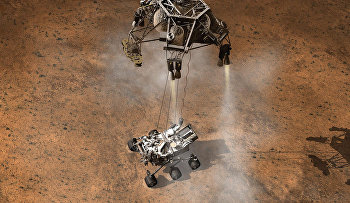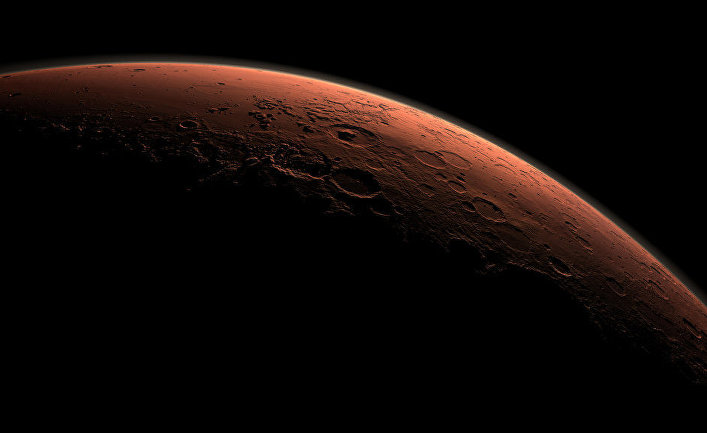At the Moscow Space Research Institute it has been long known what had become of the Martian atmosphere way before the US's discovery.
The Russian Academy of Sciences complained that NASA's so-called "new Mars discovery" was already made by the Soviet researchers decades ago. According to Russian scientists, the discovery of the loss of atmosphere and water on the red planet does not belong to NASA.
The so-called “new” information about the disappearance of Mars atmosphere and its loss of water, announced by NASA last week, is nothing more than an elaboration of the conventional assessment originally made by the Soviet interplanetary stations. No new data in this information was revealed, Russian scientists argue. Such a statement was made by Oleg Weisberg, Chief researcher of the Laboratory of solar wind of the Space Research Institute.

Weisberg was quoted by the official website of the Space Research Institute (Moscow) as saying: "… It is unfortunate that our American colleagues at their Press Conference didn't not find it necessary to refer to the earlier discoveries." Relying on Weisberg, the Soviet stations Mars 2-3and 5 were the very first in the history of the Martian atmosphere to begin its exploration. Back in the 1970s, it was for the first time when Mars magnetosphere was found and the flow of atmospheric ions, carried by the solar wind, was recorded.
Warm & wet #Mars stripped of atmosphere by solar winds – #NASA https://t.co/ZvvQLn1OLf pic.twitter.com/N5HhaQpnU6
— RT (@RT_com) November 9, 2015
"Already then, my young colleague Anatoly Bogdanov, who also worked for IKI, and I published these results leading to a conclusion that measured by us the ions flow carrying away by the solar wind is so strong that it has resulted in a great loss of the Martian atmosphere during all of this planet existence," Russian scientist declared. Thanks to Mars 5, the scientists were successful in identifying that the speed of material loss from the atmosphere reached a quarter of kg per second, says Chief researcher of the Laboratory of solar wind.
And besides, all the results “were confirmed experimentally at the Soviet Martian satellite Phobos 2 in 1988, as well as Mars Express (ESA).” It should be reminded, that this month NASA officials announced the measurement of the rate of Mars atmospheric ion flow (the loss rate has been estimated to be 100 grams per second).






